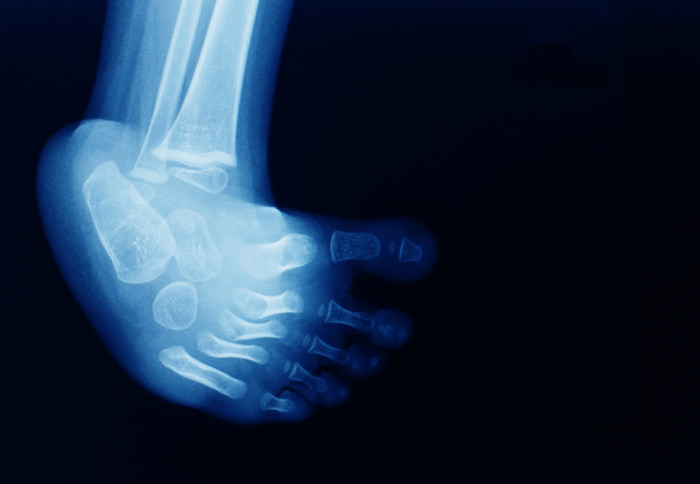Potential therapeutic target for skeletal development problems revealed in mice

A new Imperial College London study has revealed a potential new therapeutic target for problems with foetal bone and joint growth during development.
In the uterus, foetal movements such as kicking generate mechanical forces that drive the development of healthy bones and joints, including their shape. However, the precise mechanisms of how these mechanical movements affect cartilage and bone formation are unknown.
TRPV4 might be a valuable target for future therapeutic medicines for abnormalities of babies’ skeletal growth Dr Nidal Khatib Department of Bioengineering
Now, new research published in Science Advances indicates that an ion channel in the membranes of cells called TRPV4 is a key link between the mechanical loading from foetal movements and healthy bone and joint formation. Therefore, TRPV4 may be a valuable target in future treatments for abnormalities in skeletal development.
First author Dr Nidal Khatib, from Imperial’s Department of Bioengineering, said: “If our findings can be validated in humans, TRPV4 might be a valuable target for future therapeutic medicines for abnormalities of babies’ skeletal growth and shaping, or even for growing new tissues to treat joint arthritis in adults.”
Senior author Professor Niamh Nowlan of University College Dublin (UCD) said: "This research identifies the TRPV4 channel as playing a key role in translating mechanical signals from a baby's movement in the womb to healthy development of the skeleton. The channel could in the future form part of a therapy that would reduce the effects of reduced or restricted foetal movements on skeletal development in babies."

Foetal movements are a critical sign of a baby's health and development. Such movements are also important for development of the baby's bones and joints. When a baby doesn't move enough, or their movements are restricted in some way, their joints do not form correctly, leading to conditions such as developmental dysplasia of the hip, where the hip joint is unstable or dislocated, or arthrogryposis, where multiple joints are angled abnormally.
In healthy bone development, mechanical forces activate the TRPV4 channel, which allows certain ions into and out of cells. To carry out the study, the researchers blocked the activity of TRPV4 in embryonic mouse limbs and studied the effects.

They found that blocking TRPV4 reduces the proliferation of cells and the production of matrix in the cartilage, both of which affect growth of the joint.
Dr Khatib said: “Our findings shed light on an important mechanism in foetal skeletal development, and therefore a potential target for new medicines that can help growth in the womb or adult knee conditions such as arthritis.”
Next, the researchers will investigate ways of negating the debilitating effects of lack of foetal movement on the growing skeleton. Future avenues of work also include using their new understanding of the TRPV4 ion channel in development to progress the advent of successful skeletal regeneration strategies in adults.
“Mechanoregulatory role of TRPV4 in prenatal skeletal development” by Khatib et al., published 25 January 2023 in Science Advances.
Main image: Shutterstock
Following images: Khatib et al.
Article text (excluding photos or graphics) © Imperial College London.
Photos and graphics subject to third party copyright used with permission or © Imperial College London.
Reporter
Caroline Brogan
Communications Division